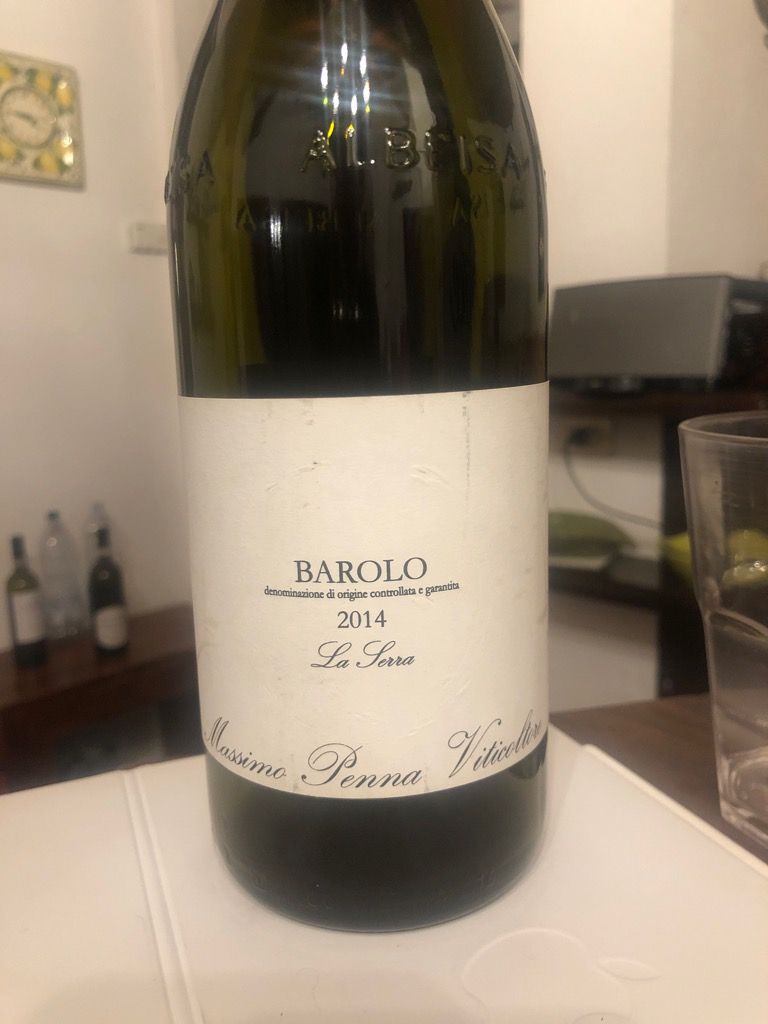
External search
Google (images)
Wine Advocate
Wine Spectator
Burghound
Wine-Searcher
Vintages
2018
2016
2014
2012
2010
2009
2007
2006
From this producer
Show all wines
All tasting notes
|
| Drinking Windows and Values |
| Drinking window: Drink by 2030 (based on 2 user opinions) |
| Community Tasting History |
| NebbioloNebbiolo is a red grape indigenous to the Piedmont region of Italy in the Northwest. The grape can also be found in other parts of the world, though they are not as respected.
Nebbiolo is often considered the "king of red wines," as it is the grape of the famed wines of Barolo DOCG, Barbaresco DOCG, and Roero DOCG. It is known for high tannins and acidity, but with a distinct finesse. When grown on clay, Nebbiolo can be very powerful, tannic, and require long aging periods to reach its full potential. When grown on sand, the grape exhibits a more approachable body with more elegant fruit and less tannins, but still has high aging potential.
"Nebbiolo" is named for the Italian word, "nebbia", which means "fog", in Italian and rightfully so since there is generally a lot of fog in the foothills of Piedmont during harvest.
Nebbiolo is a late-ripening variety that does best in a continental climate that boasts moderate summers and long autumns. In Piedmont, Nebbiolo is normally harvested in October.
More links:
Varietal character (Appellation America) | Nebbiolo on CellarTrackerLa SerraLa Serra, or rather the other side of the Marcarini Barolo production, comes from a historic area of ancient origin whose soil,lacking organic substances but rich in mineral salts and microelements, is capable of giving wines good color, structure, and flavorful but never excessive tannins. The particular microclimate is characterized by a slight ventilation with the circulation of fresh and dry air. The ripening occurs a bit later than in the Brunate area, resulting in very elegant and apparently less structured wines, but always generous and rich with intense, ethereal bouquets. The fermentation and all phases of maturation follow the same traditional methodology as the Brunate wine. The wine has a garnet-color and ruby-red reflections with a slight orange note. The nose is ethereal, fresh, elegant and very persistent, with hints of violet, rose, liquorice and sweet spices. In the mouth the flavor is long and intense. To be served in crystal glasses with very large bowls.
Variety: Nebbiolo
Rootstocks: Kober 5BB - 420A
Plantation Density: 4,000 rootstocks per hectare
Training System: Free-standing espalier with “Guyot” pruning
Average Altitude: 380 m above sea level
Exposure: South, Southwest
Soil: calcareous, argillaceous, with magnesium content
Plantation Date: 1991
Zone: La Morra
Cultivated Area: 3.5 hectares
Exact position and outline on weinlagen.infoItaly Italian Wines (ItalianMade.com, The Italian Trade Commission) | Italian Wine Guide on the WineDoctorPiedmont Vignaioli Piemontesi (Italian only)
On weinlagen-infoLanghe Consorzio di Tutela Barolo Barbaresco Alba Langhe e Roero | Union of Producers of Albese Wines (Albeisa)BaroloRegional History:
The wines of Piedmont are noted as far back as Pliny's Natural History. Due to geographic and political isolation, Piedmont was without a natural port for most of its history, which made exportation treacherous and expensive. This left the Piedmontese with little incentive to expand production. Sixteenth-century records show a mere 14% of the Bassa Langa under vine -- most of that low-lying and farmed polyculturally. In the nineteenth century the Marchesa Falletti, a frenchwoman by birth, brought eonologist Louis Oudart from Champagne to create the first dry wines in Piemonte. Along with work in experimental vineyards at Castello Grinzane conducted by Camilo Cavour -- later Conte di Cavour, leader of the Risorgimento and first Prime Minister of Italy -- this was the birth of modern wine in the Piedmont. At the heart of the region and her reputation are Alba and the Langhe Hills. This series of weathered outcroppings south of the Tanaro River is of maritime origin and composed mainly of limestone, sand and clay, known as terra bianca. In these soils -located mainly around the towns of Barolo and Barbaresco -- the ancient allobrogica, now Nebbiolo, achieves its renowned fineness and power.
map of Barolo DOCG
An interesting thread on Traditional vs. Modern Barolo producers:
https://www.wineberserkers.com/forum/viewtopic.php?f=1&t=106291 |
|




